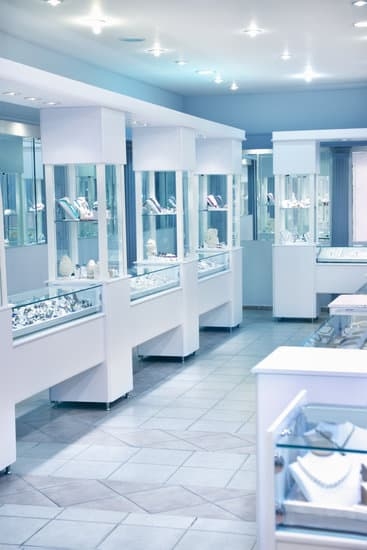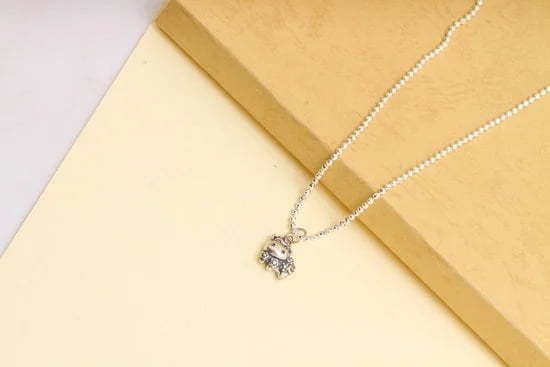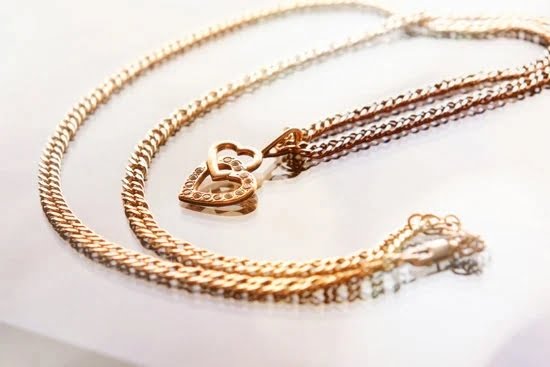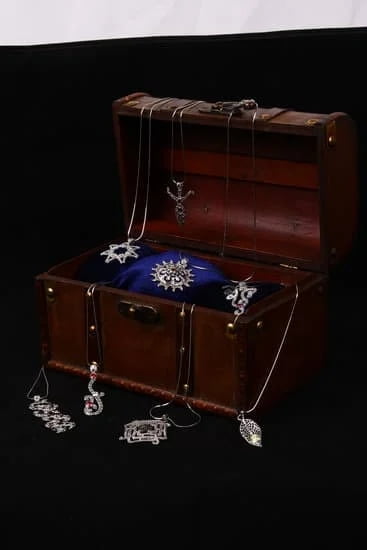Jewelry photography can be a challenging task, requiring careful attention to detail and proper lighting techniques. One essential tool that can greatly enhance the quality of your jewelry photos is a photo box. A DIY photo box specifically designed for jewelry photography can provide you with excellent control over lighting, minimize reflections, and create professional-looking images of your precious pieces.
Understanding the importance of using a photo box for jewelry photography is crucial in achieving stunning results. Whether you are an amateur jewelry maker, an online seller, or simply want to capture beautiful images of your personal collection, a photo box can make all the difference. With its controlled environment and optimized lighting conditions, a photo box allows you to highlight the intricate details and sparkle of your jewelry.
In this article, we will explore the benefits of using a DIY photo box for jewelry photography and how it surpasses other alternatives. We will also guide you through the materials needed to build your own photo box and provide step-by-step instructions on assembling it.
Additionally, we will share valuable tips and tricks on setting up the perfect lighting for optimal results and offer editing techniques to enhance your jewelry photographs. Whether you are just starting out or looking to improve your skills, this article will equip you with everything you need to know about leveraging a DIY photo box for captivating jewelry imagery.
Understanding the Benefits
One of the most important aspects of jewelry photography is capturing the true beauty and intricacy of each piece. This can be a challenging task, as jewelry is often small and highly reflective, making it difficult to get the perfect shot. This is where a DIY photo box comes in handy. A photo box provides controlled lighting and a neutral background, allowing you to capture clear and professional-looking photos of your jewelry.
The benefits of using a DIY photo box for jewelry photography are numerous. Firstly, it provides consistent lighting conditions for each photo you take. With a well-constructed photo box, you can ensure that your jewelry is evenly lit from all angles, highlighting its unique features and giving it a polished look. This consistency is crucial if you plan on creating an online store or showcasing your jewelry on social media platforms where customers expect high-quality images.
Secondly, a DIY photo box allows you to have complete control over the background of your photos. By using a neutral-colored backdrop, such as white or gray, you can eliminate distractions and focus the viewer’s attention solely on the jewelry itself. This creates a clean and professional aesthetic that enhances the appeal of your pieces.
Lastly, using a photo box also helps reduce unwanted reflections and glare on your jewelry. The controlled lighting within the box minimizes harsh shadows and gives you more control over how light interacts with your pieces. By diffusing the light source properly, you can achieve beautiful images with minimal reflection or glare on gemstones or metallic surfaces.
Materials Needed
To build your own DIY photo box for jewelry photography, you will need to gather a few essential tools and materials. Here is a list of what you will need:
- Cardboard Box: Find a cardboard box that is large enough to fit your jewelry and has enough space for lighting equipment.
- White Poster Board or Foam Board: This will be used to create the seamless background inside the photo box. Make sure it is large enough to cover the entire interior of the box.
- Aluminum Foil or White Tissue Paper: To help diffuse the light and create a soft, even tone, you can line the sides of the box with aluminum foil or attach white tissue paper to the walls.
- Cutting Tool: You will need a cutting tool such as a utility knife or scissors to cut openings in the box for windows and for creating slots to attach lighting equipment.
- Ruler or Tape Measure: Use this tool to measure and mark where you want your windows and slots to be placed on the box.
- Lighting Equipment: Choose between natural light, artificial light sources like LED lights, or a combination of both. A tripod can also be helpful in keeping your camera steady during long exposures.
Remember that these are just the basic materials needed to get started on building your DIY photo box. You may find that additional items such as diffusers, reflectors, or fabric backdrops may enhance your photography further down the line.
Once you have gathered all of your materials, you can move on to building your own photo box for jewelry photography. With careful assembly and attention to detail, you’ll soon have a professional-looking setup that enables you to capture stunning photos of your precious jewelry pieces.
Step-by-Step Guide
Building a DIY photo box for jewelry photography is an affordable and effective way to capture stunning images of your jewelry pieces. Whether you are selling jewelry online or simply want to showcase your collection, a photo box can make a significant difference in the quality of your photographs. In this section, we will provide a step-by-step guide on how to build your very own photo box for jewelry photography.
To begin building your DIY photo box, you will need the following materials:
- A cardboard box: Choose a size that suits the dimensions of your jewelry pieces.
- White poster board or foam boards: These will be used to create the walls and floor of the photo box.
- White fabric or tissue paper: This will serve as the diffuser for the lighting inside the photo box.
- Tape or glue: Use either tape or glue to secure the poster boards and fabric in place.
- A craft knife or scissors: These tools will come in handy when cutting holes for lighting.
- Lighting equipment: This can include daylight bulbs, lamps, or professional photography studio lights. Make sure they can be adjusted for brightness and direction.
Once you have gathered all of the necessary tools and materials, follow these steps to build your DIY photo box:
- Start by cutting out three sides of the cardboard box using a craft knife or scissors. Leave one side intact as this will be the front opening of the photo box.
- Cover each cut-out side with white poster board or foam boards, tape them securely in place, ensuring there are no wrinkles or overlapping edges.
- Next, cut out a square hole on the top panel of the box to allow light to enter from above. The size should be sufficient to fit your lighting equipment.
- Attach the white fabric or tissue paper to the inside of the box using tape or glue. This will serve as a diffuser and soften the light for better image quality.
- Set up your lighting equipment outside the photo box. Place them at angles that create even, diffuse lighting inside the box.
- Place your jewelry piece on a display stand or white background within the box. Adjust the positioning until you achieve your desired composition.
- Experiment with different camera settings, angles, and props to capture the perfect shot of your jewelry.
By following these simple steps, you can create your own DIY photo box for jewelry photography without breaking the bank. With proper lighting and composition, you will be able to capture stunning images that showcase the beauty and craftsmanship of your jewelry pieces.
Setting Up the Perfect Lighting
Capturing stunning photos of your jewelry is essential when it comes to showcasing your pieces and attracting potential customers. One crucial element in achieving high-quality photos is setting up the perfect lighting. Proper lighting not only enhances the details and colors of your jewelry but also eliminates shadows or glare that can detract from its beauty. Here are some tips and tricks to help you achieve optimal lighting for your jewelry photography using a DIY photo box.
Natural Lighting
One of the most valuable tools for jewelry photography is natural light. It provides a soft, even illumination that brings out the true colors and sparkle of your pieces. Choose a bright location near a window where you can make use of natural light during the day.
Avoid direct sunlight as it can create harsh shadows or overexpose your photos. Instead, position your DIY photo box at an angle where it receives diffused natural light from a window or use a sheer curtain to soften and control the light.
Light Diffusion
To achieve professional-looking jewelry photographs, it’s important to diffuse the light source within your photo box. Diffusion helps minimize harsh shadows and reduces reflections on reflective surfaces such as gemstones or metallic elements in your jewelry. You can easily achieve this by placing a sheet of vellum or tracing paper over the opening of your photo box, creating a softer, more delicate light that wraps around your piece beautifully.
Artificial Lighting
If natural light isn’t available or sufficient, you can supplement it with artificial lighting sources such as LED lights or lamps with daylight bulbs. Place these lights around your DIY photo box to provide additional illumination and fill in any areas that may appear shadowed or dull in your photographs. Experiment with different angles and distances to find the optimal positioning for capturing the full brilliance and details of your jewelry.
Reflective Surfaces
Utilizing reflective surfaces can help enhance the lighting in your jewelry photography. Place a white foam board or reflector opposite your light source to bounce light back onto your piece, reducing shadows and creating a more evenly lit photo. Additionally, you can use silver or gold reflectors to add a touch of warmth or unique reflections to specific areas of your jewelry.
By implementing these lighting tips and tricks, you can capture breathtaking photos that beautifully showcase the details, colors, and sparkle of your jewelry. Remember to take multiple shots from different angles and experiment with various lighting setups until you find the perfect combination that highlights the unique beauty of each piece. With proper lighting techniques, you’ll be one step closer to creating stunning photographs that captivate your audience and drive sales for your jewelry business.
Enhancing Your Photos
Once you have captured your jewelry photographs using your DIY photo box, the next step is to enhance them through editing techniques. Editing can help bring out the true beauty and sparkle of your jewelry, making it more visually appealing to potential customers. Here are some essential editing techniques to make your jewelry shine:
- Adjust Brightness and Contrast: One of the key elements in editing jewelry photos is adjusting the brightness and contrast levels. This helps create a balanced exposure and enhances the clarity of your jewelry. By increasing the brightness, you can make the gems appear more vibrant, while adjusting the contrast can add depth and dimension.
- Retouching: While photographing jewelry, there may be imperfections or blemishes that you wish to remove in post-processing. Use a photo editing software with retouching tools to remove any scratches or dust particles on your jewelry pieces. Be careful not to overdo it, as excessive retouching can make your images look unnatural.
- Color Correction: The color accuracy of your jewelry photographs is crucial for showcasing the true appearance of your pieces. Use color correction tools to adjust any hues or tones that may be off, ensuring that they match the actual colors of your jewelry as closely as possible.
- Sharpening: To further enhance the details and clarity of your jewelry photographs, apply sharpening techniques in post-processing. Focus on sharpening specific areas such as gemstones or intricate designs to make them stand out even more.
Remember, while editing is important for enhancing your jewelry photos, it is equally important not to go overboard with it. Keep in mind that potential customers want an accurate representation of what they will be purchasing, so avoid extreme edits that deviate from reality.
| Editing Technique | Description |
|---|---|
| Adjust Brightness and Contrast | Enhances exposure and clarity of jewelry |
| Retouching | Removes imperfections or blemishes on jewelry pieces |
| Color Correction | Adjusts hues and tones to match actual colors of jewelry |
| Sharpening | Enhances details and clarity of specific areas in the photo |
Showcasing Your Jewelry
Capturing attention-grabbing shots of your jewelry is essential when it comes to showcasing your products. A well-constructed DIY photo box can help you achieve these stunning shots by providing the perfect environment to highlight the unique features of your jewelry pieces. In this section, we will discuss some tips and techniques that will take your jewelry photography to the next level with the use of a DIY photo box.
One important aspect to consider when capturing attention-grabbing shots is the backdrop you choose for your jewelry. Opt for a plain and neutral-colored backdrop that won’t distract from the piece itself. This could be a simple white or black fabric or even a sheet of poster board. The focus should be on your jewelry, so keep the background simple and clean.
Proper lighting is another crucial factor in capturing attention-grabbing shots with your DIY photo box. Natural light is often considered the best option for photographing jewelry as it brings out the true colors and details of the piece.
Set up your DIY photo box near a window where you can take advantage of this natural light. However, if natural light is not available or not sufficient, invest in some good quality artificial lights such as LED lights to ensure proper illumination.
Angles and composition play a significant role in capturing captivating shots of your jewelry. Experiment with different angles, both close-up and from a distance, to find the most flattering view for each piece. Don’t be afraid to get creative with composition either – try different arrangements and layouts until you find what best highlights the unique qualities of your jewelry.
By following these tips and techniques, along with building and utilizing a DIY photo box effectively, you can capture attention-grabbing shots that are sure to captivate potential customers. Remember, investing time in high-quality photography is an investment in your business’s success.
Troubleshooting Common Issues
Problem: Uneven Lighting
One common issue that photographers face when using a DIY photo box is uneven lighting. This can result in shadows or highlights appearing too harsh on the jewelry, making it difficult to capture the true essence of the piece. To fix this problem, there are a few solutions you can try.
Firstly, make sure that you are using diffused lighting sources. This means using softboxes or diffusers to spread the light evenly throughout the box. If you’re using lamps or natural light, experiment with positioning them at different angles to achieve an even distribution.
Another solution is to use reflectors strategically. Reflectors bounce light back onto the subject and can help to fill in any shadows or dark spots. You can use white foam boards, aluminum foil, or professional photography reflectors for this purpose.
Lastly, consider adjusting your camera settings. Play around with your exposure settings and experiment with different white balance options to try and correct any issues with uneven lighting.
Problem: Reflections and Glare
Reflections and glare can be major obstacles when photographing jewelry in a DIY photo box. These unwanted reflections can distract from the beauty of the piece and make it difficult for viewers to see its finer details. Luckily, there are a few techniques that can help minimize or eliminate these reflections.
One option is to use a polarizing filter on your camera lens. This filter reduces glare caused by reflections off shiny surfaces like gemstones or metal components of your jewelry pieces. Simply attach the filter onto your lens and adjust it until the reflection is minimized.
If purchasing a polarizing filter isn’t an option for you, another solution is to change the angle of your lights or adjust their intensity. Experimenting with different positions and distances between your jewelry and lighting sources can often help eliminate unwanted reflections.
Additionally, you can try using a black velvet cloth as a backdrop within the photo box. This cloth absorbs light and reduces reflections, making it an ideal solution for minimizing glare. You can also strategically place pieces of black cardstock or other opaque objects around the jewelry to block any reflections that may be coming from elsewhere.
Problem: Color Accuracy
Another common issue photographers face when using a DIY photo box is achieving accurate color representation in their photos. Jewelry often has different finishes and tones that need to be accurately portrayed, which can be challenging.
To address this problem, it is important to calibrate your camera’s white balance properly. Use a white balance card or set a custom white balance based on the lighting conditions in your setup. This will ensure that the colors are captured as accurately as possible.
Additionally, post-processing software can be used to fine-tune the colors and make adjustments if needed. Experiment with different color correction tools in programs like Adobe Lightroom or Photoshop to achieve the desired result.
Remember that achieving perfect color accuracy may require some trial and error, so don’t get discouraged if you don’t get it right on your first attempt. With practice, you’ll become more adept at capturing the true colors of your jewelry pieces using your DIY photo box setup.
Expert Advice
When it comes to photographing jewelry, professional photographers have a wealth of knowledge and experience to share. Here are some expert tips on using DIY photo boxes to capture stunning shots of your precious pieces.
1. Use a neutral background: One common piece of advice from professional photographers is to use a neutral background when photographing jewelry. This allows the focus to be solely on the jewelry itself and prevents any distractions. A white or off-white background works best in most cases, as it helps showcase the true color and shine of the piece.
2. Experiment with different lighting angles: Lighting plays a crucial role in jewelry photography. Professionals recommend experimenting with different lighting angles to find what works best for your specific piece. Try positioning the light source directly above the jewelry for a dramatic effect, or place it slightly off-center to create interesting shadows and highlights.
3. Invest in quality lighting equipment: While DIY photo boxes are great for budget-friendly photography setups, investing in quality lighting equipment can take your photos to the next level. Professional photographers recommend using daylight bulbs or LED lights to achieve bright, natural-looking lighting that brings out the details and sparkle of your jewelry.
4. Edit with care: Editing software can be a powerful tool for enhancing your jewelry photos. However, professionals advise exercising caution when editing images of precious pieces. Avoid over-editing or altering the color too much, as this can distort the true appearance of the jewelry. Instead, focus on minor adjustments such as sharpening, brightening, and removing any dust or imperfections.
By following these expert tips from professional jewelry photographers, you’ll be able to maximize the potential of your DIY photo box and produce eye-catching images that truly showcase the beauty of your jewelry collection.
Conclusion
In conclusion, a DIY photo box is an invaluable tool for jewelry photography. It offers numerous benefits, including the ability to control lighting and create a professional-looking setup. By following the step-by-step guide and gathering the necessary materials, anyone can easily build their own photo box at a fraction of the cost of purchasing one.
One of the key advantages of a DIY photo box is its flexibility. With the ability to customize the size and features of your photo box, you can easily adapt it to accommodate different types and sizes of jewelry. This allows for versatility in capturing attention-grabbing shots that effectively showcase your pieces.
Another important aspect to consider is lighting. Setting up the perfect lighting for jewelry photography can be challenging, but with a DIY photo box, you have full control over the light source and positioning. By experimenting with different lighting techniques and using reflectors or diffusers, you can achieve optimal results that enhance the sparkle and details of your jewelry.
Furthermore, editing techniques can play a significant role in enhancing your photos even further. With various software available today, you can adjust brightness, contrast, color balance, and remove any imperfections to make your jewelry shine even more.
In conclusion, by utilizing a DIY photo box for your jewelry photography needs, you not only save money but also have complete control over the final result. The value of this tool lies in its ability to create professional-looking shots that will capture viewers’ attention and ultimately contribute to your success as a jewelry photographer. So why wait? Start building your own DIY photo box today and unlock endless possibilities for showcasing your beautiful jewelry collection.

Welcome to my jewelry blog! My name is Sarah and I am the owner of this blog.
I love making jewelry and sharing my creations with others.
So whether you’re someone who loves wearing jewelry yourself or simply enjoys learning about it, be sure to check out my blog for insightful posts on everything related to this exciting topic!





